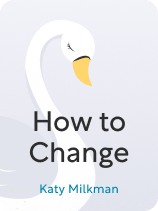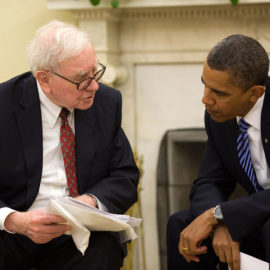

This article is an excerpt from the Shortform book guide to "How to Change" by Katy Milkman. Shortform has the world's best summaries and analyses of books you should be reading.
Like this article? Sign up for a free trial here.
Want to learn how to change your behavior? What does it take to make changes that last?
To change your behavior, you need to work with your natural tendencies and create solutions that will ease you into a new behavioral pattern. Knowing how to engineer solutions that are specific to your situation is key.
Read more about how to create lasting change with these insights from Katy Milkman’s How to Change.
Adopting Positive Behavior Changes
In How to Change, Katy Milkman takes on one of the perennial problems of personal growth—how to change your behavior. Many of us want and work for positive behavioral change, yet lasting success is difficult and often elusive. We fight against the less-advantageous aspects of our nature, from forgetfulness to impulsivity, but mainstream methods can’t always help us overcome these challenges.
Milkman, an economist and professor at The Wharton School of the University of Pennsylvania, argues that this is because we lack an effective strategy and a clear understanding of how to use human nature to our advantage. In other words, behavioral change comes not through willpower, discipline, or self-control but from a deliberate and scientific approach that uses our best knowledge about what drives human behavior.
We’ll look at Milkman’s core strategy—tailoring specific solutions to specific problems.
Change Requires Targeted Solutions
Milkman recommends that you approach behavior change as an engineer approaches an engineering problem: First, understand the problem. Then, devise a solution that’s tailored to the specifics of the problem. When it comes to behavior change, this means understanding the forces within and without us that influence how we behave—and then adapting solutions that work to overcome them or turn them in our favor.
(Shortform note: Based on how Milkman presents her core strategy, it’s apparent that she approaches behavior change from a primarily mental or cognitive angle. That is, she views change as an intellectual puzzle first and foremost. Throughout this guide, we’ll explore this perspective’s strengths as well as its potential blindspots—such as overlooking the effects of childhood trauma on our behaviors later in life and the need to heal trauma for real change.)
Say you want to start meditating each evening. To use Milkman’s approach, you’d first evaluate the situation: What problems have you faced in trying to do this? What’s working for you, and what’s working against you? For instance, maybe you get easily distracted and seek out easier, more pleasurable activities.
Then, you’d create a strategy that leverages those forces to your advantage—such as by planning to reward yourself with a favorite guilty pleasure but only after you’ve completed your meditation.
| Mix and Match Habit Strategies In a similar vein to Milkman, James Clear (Atomic Habits) offers an approach to habit or behavior change that involves adjusting one of four variables until the behavior sticks. He explains that a habit encompasses a loop that runs through a cue, a craving, a response, and a reward. You can make small tweaks that act on each stage of this loop, such as by enhancing your cues, making a behavior more craveable, making the response easier, or finding fulfilling rewards. To combine this with Milkman’s approach, you might consider Clear’s model as a template through which to evaluate the forces you’re working with: 1. Are you facing a particular challenge at any phase of the loop? 2. Does one phase offer an ideal opportunity to tweak or experiment to find a tailored solution? Like Milkman, Clear recommends that you think flexibly and find what works for each unique change situation. Additionally, he adds that making even one tiny change can have a ripple effect, motivating you to change more behaviors when you see that doing so isn’t impossible. |

———End of Preview———
Like what you just read? Read the rest of the world's best book summary and analysis of Katy Milkman's "How to Change" at Shortform.
Here's what you'll find in our full How to Change summary:
- An evidence-based approach to creating lasting change
- How to overcome common human failings, such as procrastination
- When the best time to enact changes in your life is






